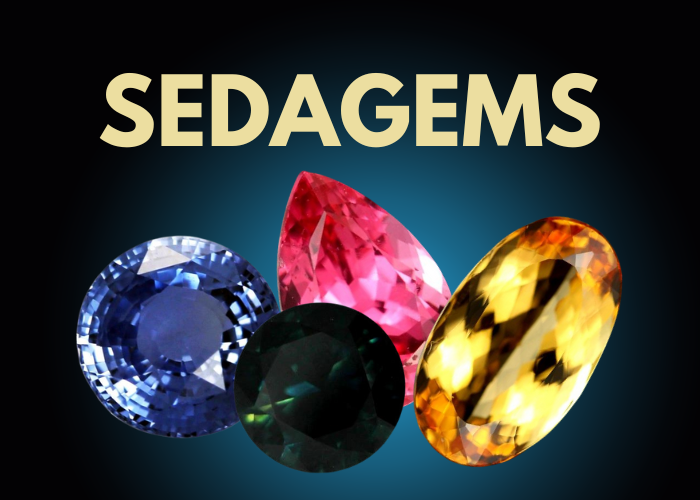Vous n'avez pas enchéri sur cette enchère.
12.53 CTS JADE CARVING DRILLED -BURMA GRADE A [ST8149]
- UGS
- Dimensions (mm)
- x x mm
- Poids (cts)
- Certified Gemstones
- Non
- Taper
- Bead
- Couleurs
-
SEDA GEMS
JADE CARVING
A GRADE
This is a natural untreated stone from Burma hand carved in China.
Weight 12.53 cts app
Size 32 x 19 x 2 mm app
There is a lot of treated material on the maket but im lucky as i have a chinese gem dealer who buys jade for me.
A grade is jewelery standared which is not treated,dyed or resin added.
Jade', or yu, as it is called in China, is strictly speaking a generic term for two different gems, nephrite and jadeite. The name is derived from the Spanish 'piedra de ijada', loin-stone, jade having been recognised by the Amerindians as a remedy for kidney ailments. Because of its beneficial effect on the kidneys, the stone was also known as 'lapis nephriticus'. That, indeed, is where the term 'nephrite' came from.
Jadeite and nephrite are both regarded in China as 'zhen yu', 'genuine jade'. It was not until the beginning of the 19th century that mineralogists and gemmologists started to differentiate between them, since they bear a considerable resemblance to each other in terms of their appearance, their hardness and the properties they exhibit when being processed. Both are tough, since they consist of dense, close-grained, matted aggregates, but they differ from one another in their chemical composition and colours. Nephrite ranges mainly from mid to dark green or grey-green, but it can also be white, yellowish or reddish. Rarer, and somewhat tougher, jadeite displays hues which include green, but also white or pink, and reds, blacks, browns and violets. In both minerals, the way the colour is distributed varies a great deal. Only in the very finest jade is the colour evenly distributed. Both nephrite and jadeite often have veins, blemishes and streaks running through them, though these may not always be regarded as flaws. On the contrary, some of these patterns are considered particularly valuable.
- UGS
- Dimensions (mm)
- x x mm
- Poids (cts)
- Certified Gemstones
- Non
- Taper
- Bead
- Couleurs
-
SEDA GEMS
JADE CARVING
A GRADE
This is a natural untreated stone from Burma hand carved in China.
Weight 12.53 cts app
Size 32 x 19 x 2 mm app
There is a lot of treated material on the maket but im lucky as i have a chinese gem dealer who buys jade for me.
A grade is jewelery standared which is not treated,dyed or resin added.
Jade', or yu, as it is called in China, is strictly speaking a generic term for two different gems, nephrite and jadeite. The name is derived from the Spanish 'piedra de ijada', loin-stone, jade having been recognised by the Amerindians as a remedy for kidney ailments. Because of its beneficial effect on the kidneys, the stone was also known as 'lapis nephriticus'. That, indeed, is where the term 'nephrite' came from.
Jadeite and nephrite are both regarded in China as 'zhen yu', 'genuine jade'. It was not until the beginning of the 19th century that mineralogists and gemmologists started to differentiate between them, since they bear a considerable resemblance to each other in terms of their appearance, their hardness and the properties they exhibit when being processed. Both are tough, since they consist of dense, close-grained, matted aggregates, but they differ from one another in their chemical composition and colours. Nephrite ranges mainly from mid to dark green or grey-green, but it can also be white, yellowish or reddish. Rarer, and somewhat tougher, jadeite displays hues which include green, but also white or pink, and reds, blacks, browns and violets. In both minerals, the way the colour is distributed varies a great deal. Only in the very finest jade is the colour evenly distributed. Both nephrite and jadeite often have veins, blemishes and streaks running through them, though these may not always be regarded as flaws. On the contrary, some of these patterns are considered particularly valuable.
| Fournisseur d'expédition | Expédition vers :pays | Expédition dans le reste du monde |
|---|---|---|
| FedEx | $12.00 / : jours jours | $39.00 / : jours jours |
|
:pays
:fournisseur bénéficie d'une réduction de :prix sur les commandes avec :quantité ou plus d'articles
Reste du monde
:fournisseur bénéficie d'une réduction de :prix sur les commandes avec :quantité ou plus d'articles
|
||
| Registered Shipping | $9.00 / : jours jours | $16.00 / : jours jours |
|
:pays
:fournisseur bénéficie d'une réduction de :prix sur les commandes avec :quantité ou plus d'articles
Reste du monde
:fournisseur bénéficie d'une réduction de :prix sur les commandes avec :quantité ou plus d'articles
|
||

-
 Positif
PositifBeautiful agate piece , and as always fast efficient service from Sedagems
-
 Positif
PositifNice
-
 Positif
PositifGorgeous stones, very happy
-
 Positif
PositifGorgeous stone, very happy
Pourquoi les utilisateurs se surenchérissent-ils ?
Lorsqu'une enchère est placée, il s'agit du montant maximum qu'un utilisateur est prêt à enchérir pour le produit. Notre système enchérira ensuite automatiquement au nom de cet utilisateur, augmentant progressivement l'enchère pour maintenir sa position d'enchérisseur le plus élevé, jusqu'au maximum spécifié.
Lorsqu'il y a une icône indiquant "Enchère automatique", cela signifie que notre système place activement des enchères pour l'utilisateur en fonction de son enchère maximale. Cela peut donner l'impression que les utilisateurs surenchérissent eux-mêmes, mais c'est simplement le résultat de la mise à jour de l'enchère par le système pour refléter la limite maximale des utilisateurs.











![22.9CTS VARASCITE 'SPIDER WEB' AUSTRALIA [MGW 4616]](https://liveplatforms-production.b-cdn.net/tenants/gr/uploads/images/490000-494999/490866/55236df10a48f.JPG?width=480&aspect_ratio=1001%3A1000)



![82.30 CTS JADE CARVING DRILLED -BURMA GRADE A [ST8186]](https://liveplatforms-production.b-cdn.net/tenants/gr/uploads/images/415000-419999/417628/535dc0ffa0580.JPG?width=480&aspect_ratio=1001%3A1000)
![30.69 CTS JADE CARVING DRILLED -BURMA GRADE A [ST8169]](https://liveplatforms-production.b-cdn.net/tenants/gr/uploads/images/415000-419999/417610/535dbbe03347f.JPG?width=480&aspect_ratio=1001%3A1000)
![30.06 CTS JADE CARVING DRILLED -BURMA GRADE A [ST8160]](https://liveplatforms-production.b-cdn.net/tenants/gr/uploads/images/415000-419999/417601/535db943edff6.JPG?width=480&aspect_ratio=1001%3A1000)